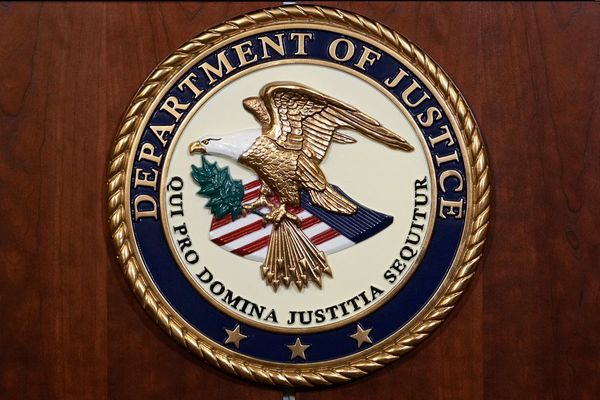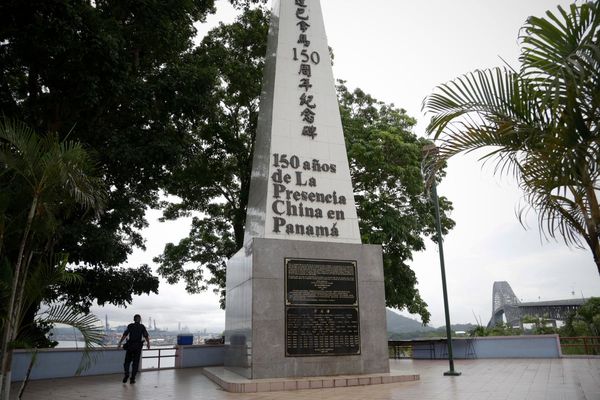
Unreliable testimonies, statements extracted under coercion, illegal detentions and harassment.
These are some of the ways in which the Maharashtra Anti-Terror Squad botched its investigation into the 2008 Malegaon blast, as per a 1,036-page judgement delivered by an NIA court in Mumbai this week.
The court acquitted all seven accused, including BJP ex-MP Sadhvi Pragya Singh Thakur and Lt Col Shrikant Prasad Purohit, in the blast that killed six and injured 100 nearly 17 years ago. They had faced 28 charges – including murder, conspiracy, terrorism, and unlawful possession of explosives – under the Indian Penal Code, the Unlawful Activities Prevention Act, and the Explosive Substances Act.
All charges were dismissed. Of the accused, six, including Purohit and Thakur, each spent nearly nine years in jail.
In its judgement, the court said the prosecution had failed to establish the guilt of the accused beyond reasonable doubt. It said the testimony of several key witnesses was “unreliable”; many turned hostile and alleged their earlier statements had been extracted under coercion or torture by ATS officers. Most did not file formal complaints, likely due to trauma or fear of retaliation, but some did lodge complaints that specifically named ATS officers.
Importantly, the court’s judgement made a clear distinction between the roles played by the ATS and the NIA. The ATS had initially investigated the case and arrested the accused. In 2011, the NIA took over and submitted its own chargesheet. Allegations of custodial torture and fabrication of evidence were levelled only against ATS officers, not against the NIA.
Significantly, an NIA officer named Anil Dubey reportedly admitted during his cross-examination that the ATS had “tortured and illegally detained” not only witnesses but also some of the accused. Dubey’s testimony also revealed glaring loopholes and gaps in the ATS’s investigation.
Newslaundry combed through the judgement. Here are the major findings.
The curious case of eyewitnesses
The court heavily scrutinised the evidence collected by the ATS. It said that statements recorded under Section 161 of the erstwhile Code of Criminal Procedure were not “substantive” and could not be relied upon unless corroborated. As such, it said, the testimony of hostile witnesses, though admissible, did not withstand judicial scrutiny.
Out of 323 witnesses summoned by the prosecution, 39 turned hostile. All 39 were “star” witnesses, considered most impactful, and all 39 deposed before the court about alleged ill-treatment by the ATS.
“ATS officers have also tortured, maltreated, assaulted them by thrusting words in their mouths to extract favourable statements from them,” the judgement said.
Dubey also admitted that there were no eyewitnesses who had seen any of the accused planting the bomb or fleeing the scene after the explosion. The phrase ‘Malegaon blast’ did not feature in any recorded conversations that had been presented as evidence.
The lack of witnesses was flagged by the court in its judgement. It noted that the bomb exploded around 9.30 pm in a crowded area. The area had been barricaded by the police for bandobast due to parallel Ramzan and Navaratri festivities. Yet no one saw who brought or parked the explosion-laden vehicle.
The court found this odd.
“It is not an incident which took place in wee hours of that night when everybody was sleeping and hence, they don’t know about the arrival of vehicle on the spot,” the judgement said. “The police were deployed…The area was barricaded. Outside vehicles were not allowed.”
Additionally, Dubey said the recovery of RDX traces from the residence of an accused named Sudhakar Chaturvedi was “suspicious”. He said that two witnesses had provided statements indicating that an ATS officer, Shekhar Bagade, had been inside Chaturvedi’s house and engaged in “suspicious activity” while Chaturvedi wasn’t present. The implication here was that the ATS may have purportedly planted RDX traces to falsely implicate Chaturvedi and others.
As per the judgement, the ATS had no counter-evidence to deny Bagade’s presence in the house without Chaturvedi. The court noted that the NIA’s own investigation seemed to support the idea that the recovery of RDX from the house was “suspect”.
The prosecution said a two-wheeler belonging to Sadhvi Pragya Singh Thakur was used to plant the bomb. Dubey, however, told the court that for two years prior to the blast, Thakur had neither possession nor control of this vehicle.
“There is absolutely no evidence on the point of source, transportation, storage, fitting, reconnaissance and parking of the alleged motorcycle fitted with RDX, except bare allegations,” the court said.
The NIA also found no evidence that Thakur had attended a key meeting in Anangpur where, according to the prosecution, the blast conspiracy had been finalised.
The ‘evidence’ against Lt Col Purohit
In 2008, Purohit was serving in the Army’s military intelligence unit. The ATS accused him of being a key conspirator in the Malegaon blast. He was accused of sourcing RDX from Kashmir, storing it at his residence, helping assemble the IED, and being central to the ideological and financial planning of the attack.
At the heart of these allegations was a group named Abhinav Bharat. The prosecution said Purohit had founded the group, collected Rs 21 lakh to fund the blast, and spent Rs 1 lakh to procure hand grenades.
Purohit, who spent nine years in jail, has consistently maintained that he had “infiltrated” right-wing extremist groups as part of a covert military operation and that he had kept his superiors informed of it. This angle was never disproved by the prosecution.
The court said it found no “reliable evidence” to back any of the ATS’s claims on Purohit’s role.
“They have no documentary evidence to show that Lt Col Purohit collected twenty-one lakh rupees, nor do they have any evidence to show he spent one lakh rupees on purchasing hand grenades,” the court said.
NIA officer Dubey told the court there was no evidence that Purohit had personally raised or handled funds for the blast, or that he had provided any financial support at all for an act of terrorism.
The court also remarked on the lack of physical evidence against Purohit. While the ATS alleged it had recovered RDX traces and detonators from Purohit’s residence, the court said this was “suspicious” and that there was “absolutely no cogent and reliable evidence on the point of arms, ammunition or any weapons found” in Purohit and other co-accused’s possession.
The judgement flagged issues in the manner in which Purohit had been arrested. His arrest was officially recorded at 8.30 am on November 5, 2008 though he had allegedly been in ATS custody since 12.10 am that day.
Curiously, Purohit was already in Army custody from October 29, 2008 under two colonels, RK Shrivastava and Jitendra Sharma, both of whom were not summoned as witnesses. It was Sharma who handed over Purohit’s mobile phone and ID cards, rather than the ATS taking these items from Purohit directly.
These items were left unsealed for several hours, raising concerns about tampering. When the phones were opened in court, a third SIM card, which was missing from all earlier records, was found.
The court said the arrest and seizure process had clear flaws and could not be fully trusted.
The role of Abhinav Bharat
On Abhinav Bharat, the court said the prosecution had repeatedly mentioned the organisation but there was no proof it had been banned or designated as unlawful. Dubey had testified in court that Abhinav Bharat was not declared a banned organisation by the Indian government, and that the NIA did not recover any arms, ammunition, or incriminating documents from any of the accused during their investigation.
The court also said there was no material to show that Abhinav Bharat was “declared as unlawful” or “declared as terrorist organization till date” by the central government. The judgement highlighted that Abhinav Bharat’s trust deed, which had been scrutinised by investigating officer ACP Mohan Kulkarni, listed only “patriotic and religious” activities as its objective and nothing “unlawful”.
The prosecution had alleged that before the blast took place, Purohit and four others held a secret meeting or conspired at a school in Nashik, purportedly to plan an Abhinav Bharat training camp or to recover weapons from another accused. The court said the prosecution had failed to prove that this took place.
Finally, despite being repeatedly summoned by the ATS prior to his arrest, the court said no documents related to Abhinav Bharat were ever collected from Purohit. No meeting minutes, fundraising records or organisational resolutions were produced in court to prove that Purohit had a leadership role or planned a terror attack.
The ‘recovery’ of a detonator, statement protocols
A key piece of evidence was the alleged recovery of a detonator from the house of an accused.
Dr Suhas Bakre, a forensic expert present during the house search, told the court he hadn’t personally witnessed the seizure of the detonator because he had been collecting samples while the ATS searched the premises. He said he was only later informed that a detonator had been found inside a cupboard.
The court said this made Bakre a hearsay witness as he did not see the device being discovered or seized firsthand.
When the detonator was shown to him, Bakre said he identified it as being “shock and friction sensitive”, meaning it could explode with a slight touch or vibration. He said he immediately advised the officers to defuse it before sending it to the forensic lab.
Despite this warning, the judgement said, the ATS did not call the Bomb Detection and Disposal Squad to defuse the device or safely take it away. The court said this “creates reasonable doubt” and that it was “highly suspicious”.
“Keeping sensitive nature explosive device in own custody gives rise to inference that as to whether it was dummy and not alive,” the judgement said.
Another major setback for the prosecution was the court’s analysis of key testimonies and procedural lapses.
Section 164 of the CrPC details protocols to be followed while recording confessions and statements. KK Pawar, a prosecution witness, admitted during his cross-examination that his statement under Section 164 was not made voluntarily. He alleged he was given a “written document” by the ATS prior to recording his statement. His statement also had the text ‘ATS’ on the top corner.
“It is well-settled that the person whose 164 statement is recorded should state the facts lying within his knowledge. If the words are trusted in his mouth or compelled to say something as directed would not amount to voluntary statement having knowledge of facts,” the judgement said.
It added that a statement must be given “freely” and “voluntarily”, “not on the basis of facts conveyed or compelled to the witness to narrate”.
Another noteworthy point in the judgement is that during the search of the house of one of the accused, the ATS said it had broken open the house’s lock. This broken lock wasn’t seized, produced in court, mentioned in the seizure report, or explained as to why it was missing.
The court said this created a “cloud of doubt” on whether the lock had actually been broken.
Finally, the court questioned the legality of Thakur’s arrest. It suggested she was kept in “illegal custody” for 13 days in October 2008 backed up by “fake station diaries”.
The prosecution said Thakur had been in the possession of “incriminating” items – mobile phones, a laptop, pamphlets – when she was picked up. But the court said there was no evidence to prove she had brought them from Surat, where she was arrested. It alleged a lack of transparency in search and seizure by police sub-inspector Suvarna Shinde, who was not examined during the trial.
“Moreover, a prudent man would not digest the story that an accused would keep several articles with him/her so as to implicate himself/herself as an accused,” the court said.
In times of misinformation, you need news you can trust. Click here to support our work.
Newslaundry is a reader-supported, ad-free, independent news outlet based out of New Delhi. Support their journalism, here.







